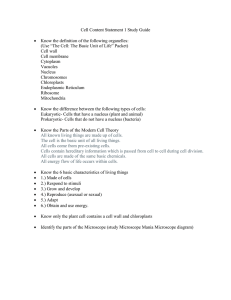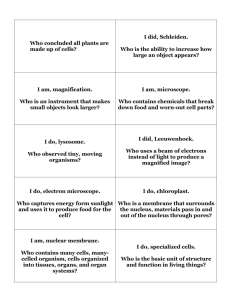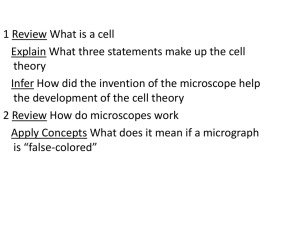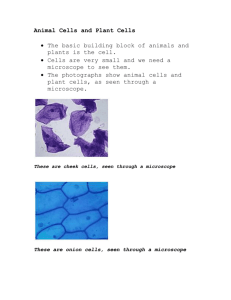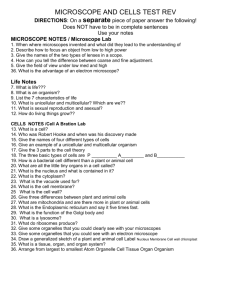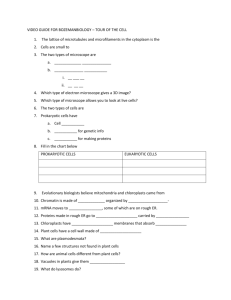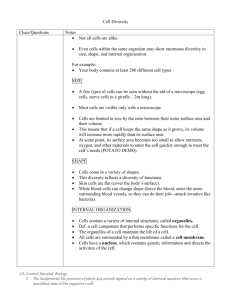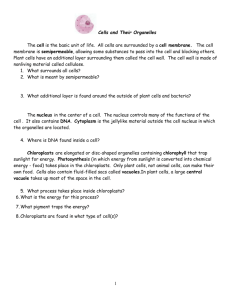Background information Year 8, unit 3: Cells
advertisement
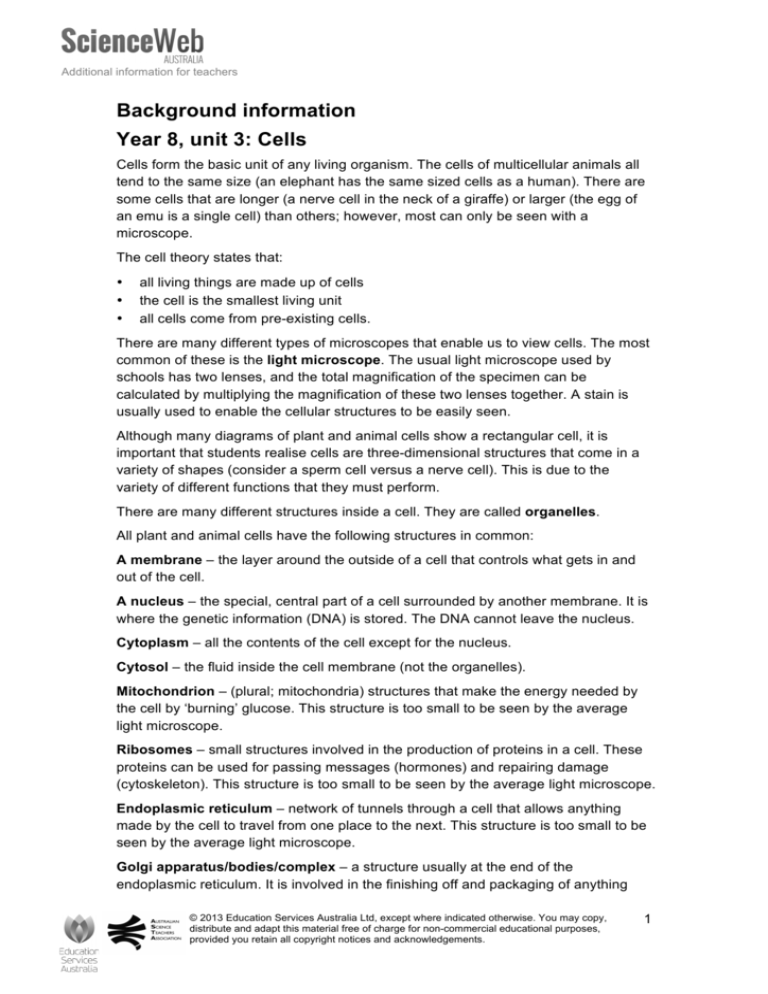
Additional information for teachers Background information Year 8, unit 3: Cells Cells form the basic unit of any living organism. The cells of multicellular animals all tend to the same size (an elephant has the same sized cells as a human). There are some cells that are longer (a nerve cell in the neck of a giraffe) or larger (the egg of an emu is a single cell) than others; however, most can only be seen with a microscope. The cell theory states that: • • • all living things are made up of cells the cell is the smallest living unit all cells come from pre-existing cells. There are many different types of microscopes that enable us to view cells. The most common of these is the light microscope. The usual light microscope used by schools has two lenses, and the total magnification of the specimen can be calculated by multiplying the magnification of these two lenses together. A stain is usually used to enable the cellular structures to be easily seen. Although many diagrams of plant and animal cells show a rectangular cell, it is important that students realise cells are three-dimensional structures that come in a variety of shapes (consider a sperm cell versus a nerve cell). This is due to the variety of different functions that they must perform. There are many different structures inside a cell. They are called organelles. All plant and animal cells have the following structures in common: A membrane – the layer around the outside of a cell that controls what gets in and out of the cell. A nucleus – the special, central part of a cell surrounded by another membrane. It is where the genetic information (DNA) is stored. The DNA cannot leave the nucleus. Cytoplasm – all the contents of the cell except for the nucleus. Cytosol – the fluid inside the cell membrane (not the organelles). Mitochondrion – (plural; mitochondria) structures that make the energy needed by the cell by ‘burning’ glucose. This structure is too small to be seen by the average light microscope. Ribosomes – small structures involved in the production of proteins in a cell. These proteins can be used for passing messages (hormones) and repairing damage (cytoskeleton). This structure is too small to be seen by the average light microscope. Endoplasmic reticulum – network of tunnels through a cell that allows anything made by the cell to travel from one place to the next. This structure is too small to be seen by the average light microscope. Golgi apparatus/bodies/complex – a structure usually at the end of the endoplasmic reticulum. It is involved in the finishing off and packaging of anything © 2013 Education Services Australia Ltd, except where indicated otherwise. You may copy, distribute and adapt this material free of charge for non-commercial educational purposes, provided you retain all copyright notices and acknowledgements. 1 Additional information for teachers that is made by the cell. The product, such as a protein, is packaged into a vesicle and transported within or to the outside of a cell. This structure is too small to be seen by the average light microscope. Vesicle – a small membrane-bound storage ‘bubble’ found in a cell. Vacuole – a large membrane-bound storage ‘bubble’ found in a cell. Plant cells often have much larger (more than half the cell) vacuoles than animal cells. Vacuoles are used by the cells to store nutrients, water or the waste products of the cell. Plant cells have a few structures that are not seen in animal cells. Chloroplasts – green structures that can be easily seen in plant cells. They use light energy to make chemical energy (glucose) through the process of photosynthesis. Chloroplasts can often be seen moving around a cell in a process called ‘cytoplasmic streaming’. The glucose made by chloroplasts is used by the mitochondria for energy. Cell wall – structural wall around a plant cell. As plants do not have skeletons, the cell wall helps provide the support a plant needs to resist gravity. The cell wall has no control over what moves in or out of a cell. It is often difficult to distinguish between the membrane of a plant cell and its cell wall. Adding salt water to the sample will help students see this difference. The addition of salt water causes water to be lost from the cell and the membrane to shrink and move away from the cell wall. Other structures cells may have include: Flagella – a whip-like structure that enables a cell to move. Sperm cells and some bacteria have them. Cilia – a series of small hair-like structures that may surround a cell. They move in concert to enable a cell to move (bacteria cells) or to move a fluid along a tube such as those cells in the upper airways of humans. The latter prevents dust particles from moving into the lungs. Bacterial cells have cell walls, membranes and ribosomes only (no other organelles). Viruses are not considered living units, as they are unable to reproduce without interacting with the DNA of a living organism. Mitosis is the process by which a cell makes a copy of its nucleus, including all the genetic material. The cell then divides into two identical daughter cells. This is how all plant and animal cells replicate. Bacterial cells do not have a nucleus and therefore replicate through binary fission. This involves the cell growing larger, then dividing into two identical daughter cells. © 2013 Education Services Australia Ltd, except where indicated otherwise. You may copy, distribute and adapt this material free of charge for non-commercial educational purposes, provided you retain all copyright notices and acknowledgements. 2
